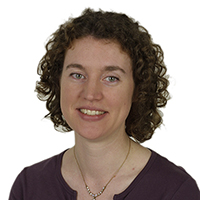Welcome to the twenty-third issue of Science in School Editorial article

Photolab
As mathematician Marcus du Sautoy explains in our feature article, mathematics is all around us – and this can be the key to exciting lessons.
X and Y – algebra or sex chromosomes? We used to think the ‘equation’ was simple – XX = female, XY = male – but then why do some people fall in between, exhibiting features of both sexes?
As two scientists who work on the intersex condition explain, the answer involves anatomy, genetics and hormones. Genetics may also lie at the heart of another condition: cancer. As scientists at EMBL have discovered, some cancers may be triggered when one of our chromosomes explodes.
Damage on a much larger scale occurs when tectonic plates collide in an earthquake. Did you know that you can monitor earthquakes in your classroom, using a homemade seismograph? And if you like making your own apparatus, you’ll probably also enjoy building a radio telescope from a satellite dish, then using it to study the Sun and other radiating bodies.
In this, the international year of sustainable energy for all, we stay with the subject of solar radiation to learn what happens inside a solar panel when the Sun shines. The Sun often disappears behind the clouds, but – less frequently – it also disappears for another reason: a solar eclipse. Learn how to replicate both solar and lunar eclipses in the classroom.
Although more than 40 years have passed since the first human landed on the Moon, more distant space travel still poses enormous challenges. To reach Mars, for example, astronauts would need to spend about a year and a half exposed to extreme conditions, far from help and packed together in cramped quarters. Spending the winter on the Concordia research station in Antarctica is similar in many ways: enduring eight months of cold and darkness, isolated from the outside world. For this reason, the European Space Agency sends a researcher to observe the overwintering crew, to help predict the effects of space travel on physical and mental health.
We all know that exercise is important for health, but did you know that regular exercise causes your body to build more mitochondria, the ‘power plants’ of the cell that transform digested food into usable energy? Instead of using food as an energy source, primary-school teacher David Lewis has used it as a source of inspiration: he developed a series of bread-based activities, covering microbes, fermentation, migration, nutrition – and, of course, baking.
For older students, physics teacher Günter Bachmann produced teaching resources to communicate the joy and interest of particle physics, during an inspiring two-month visit to CERN. Adrian Mancuso, in contrast, spends every working day at the cutting edge of experimental physics – developing an X-ray instrument to help us understand the structure of biomolecules, viruses, small cells and other particulate material.
These last two articles can be read only on our website – where you can also browse the complete archive of articles, many of which are available in other European languages. And to keep up-to-date with Science in School and other great resources for science teachers, why not ‘like’ our newly launched Facebook page? See: www.facebook.com/scienceinschool





